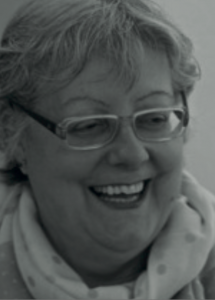She has a strong eclectic component: First of all, they are incardinated in a wide pictorial tradition of the great classics of t he painting (Velázquez, Rembrandt, Rubens, Goya, Sorolla,…).
he painting (Velázquez, Rembrandt, Rubens, Goya, Sorolla,…).
Over this basic and classic substrate elements of modernity (the French and Dutch expressionism) are added, so that her artistic personality is completed with flashes of Van Gogh, Gauguin, Toulouse-Lautrec and the avant-garde movements (especially Fauvism and Surrealism).
Goya’s black paintings leave a deep footprint in Isabel´s artwork (late-stage germ of the subsequent expressionism): deformed faces of the characters showing great suffering that will mark the artist, as there is a human background in her work worried for poverty, disease, marginalization, wars and injustices because her painting is a response to what she has already experienced and seen, trying to show in her paintings what people do not want to admit.
Appear for both plastic and iconographic expressionists components and dreamlike, which is appreciated that in many of his creations are strange elements (perhaps symbols of the subconscious world) heritage of surrealism that is also seen in Frida Kahlo´s paintings whom admires.
The canvas and the colour do not have as its main objective to describe situations, but to express emotions.
Her painting also has points in common with Neo-Expressionism of German origin and the Italian Trans avant-garde.
In Isabel´s artwork, the study of the body’s anatomical geography, shunning all idealism and putting her “artistic soul” in the task, which makes explicit the intimate story of their characters.
Isabel´s paintings have a clear expressionist affiliation as mentioned but her gaze looks for the Mannerist strength in the treatment of the bodies, the classic touch in the composition of the groups, or spreads of surreal mystery when browsing the dreamlike memory.
In the work of Isabel Jurado you can find a wide range of human referents and representations of objects representing a person, symbols and fetishes as puppets, which perform various actions imitating people but without duplicity and deceit appear. Dolls arranged as fruits, flowers or the parts of a still life are a reflection of the helplessness, alienation and even manipulation of the weakest (the child, women,…).
The touch of Isabel Jurado is distinguished by frontally impact on the canvas; She has a very wide palette and her treatment of the colour is as varied as the direction of her brush. She frequently uses pure, aggressive colours that are blended by neighborhood, or harmonious gradations with plenty of pastel colours; but the atmosphere created in any case, seems to breathe an air of sadness.
In short, the artwork of Isabel is a reflection of her life and experiences: Disease, deep marks of childhood, defending the weak, the anatomical and psychological study of the characters along with the influence of her native Madrid and its adoption home in Andalucía.
As the great poet Vicente Núñez said… “Both of you, Isabel and Rafael, are two supreme helpless beings chosen by the gods”.
